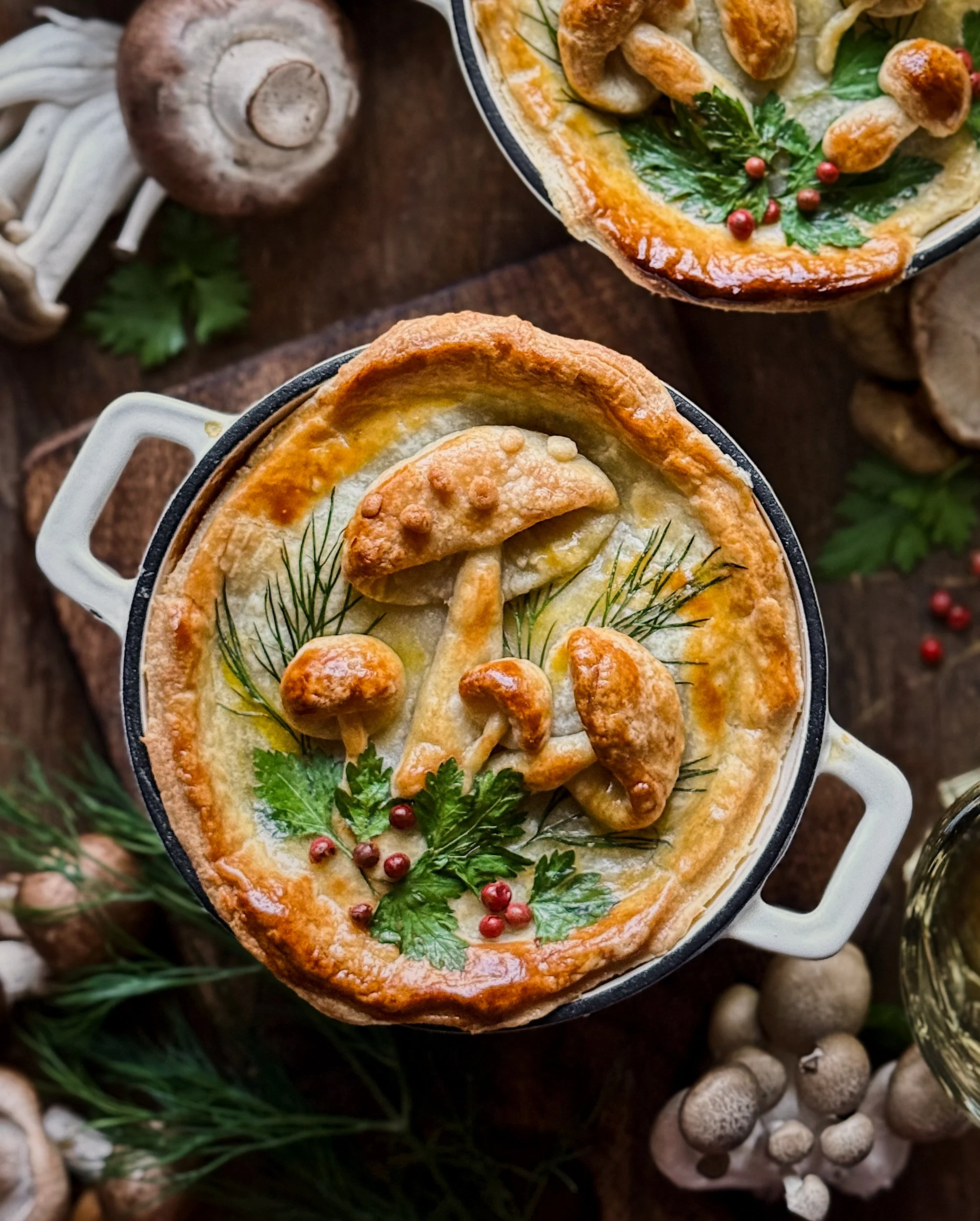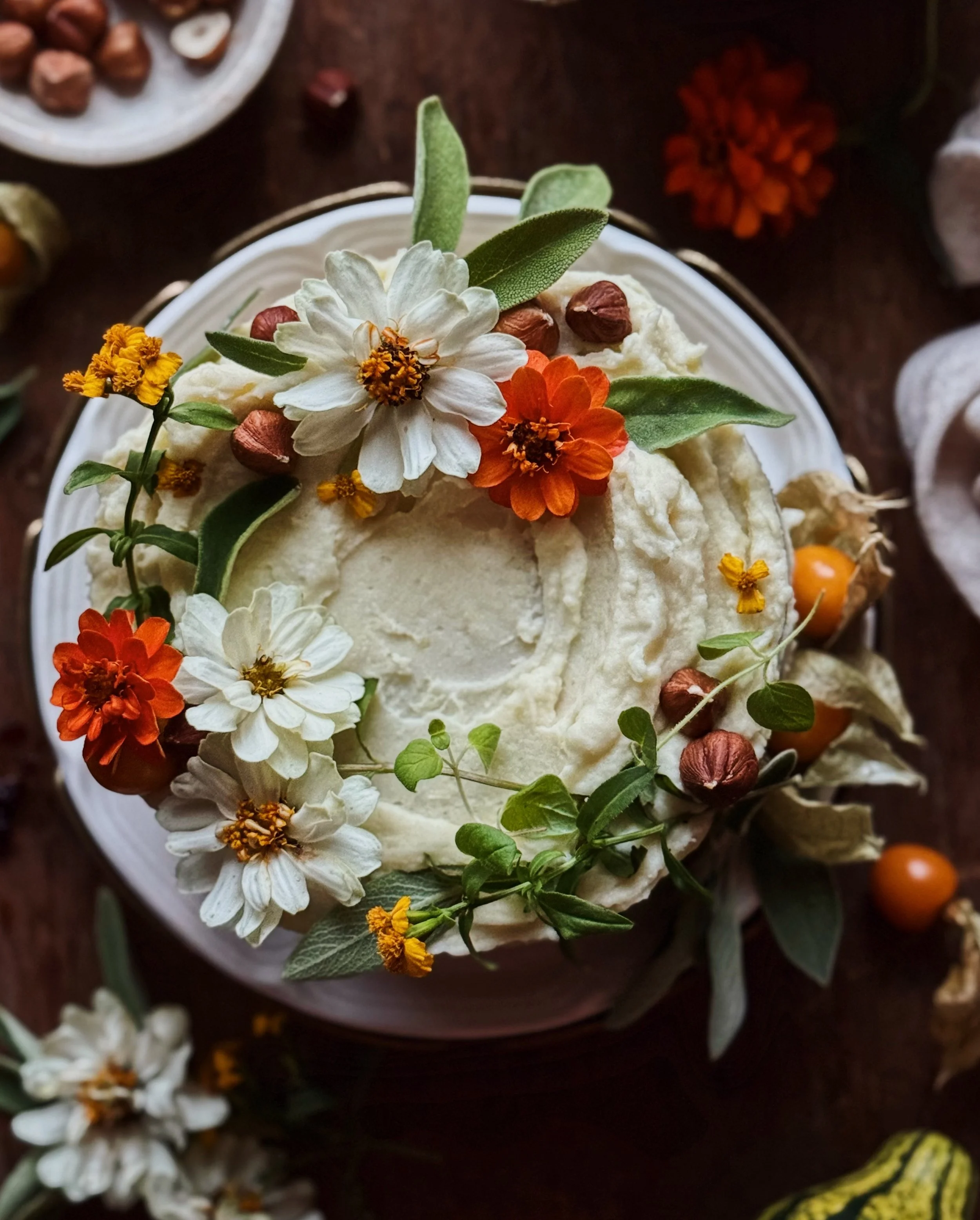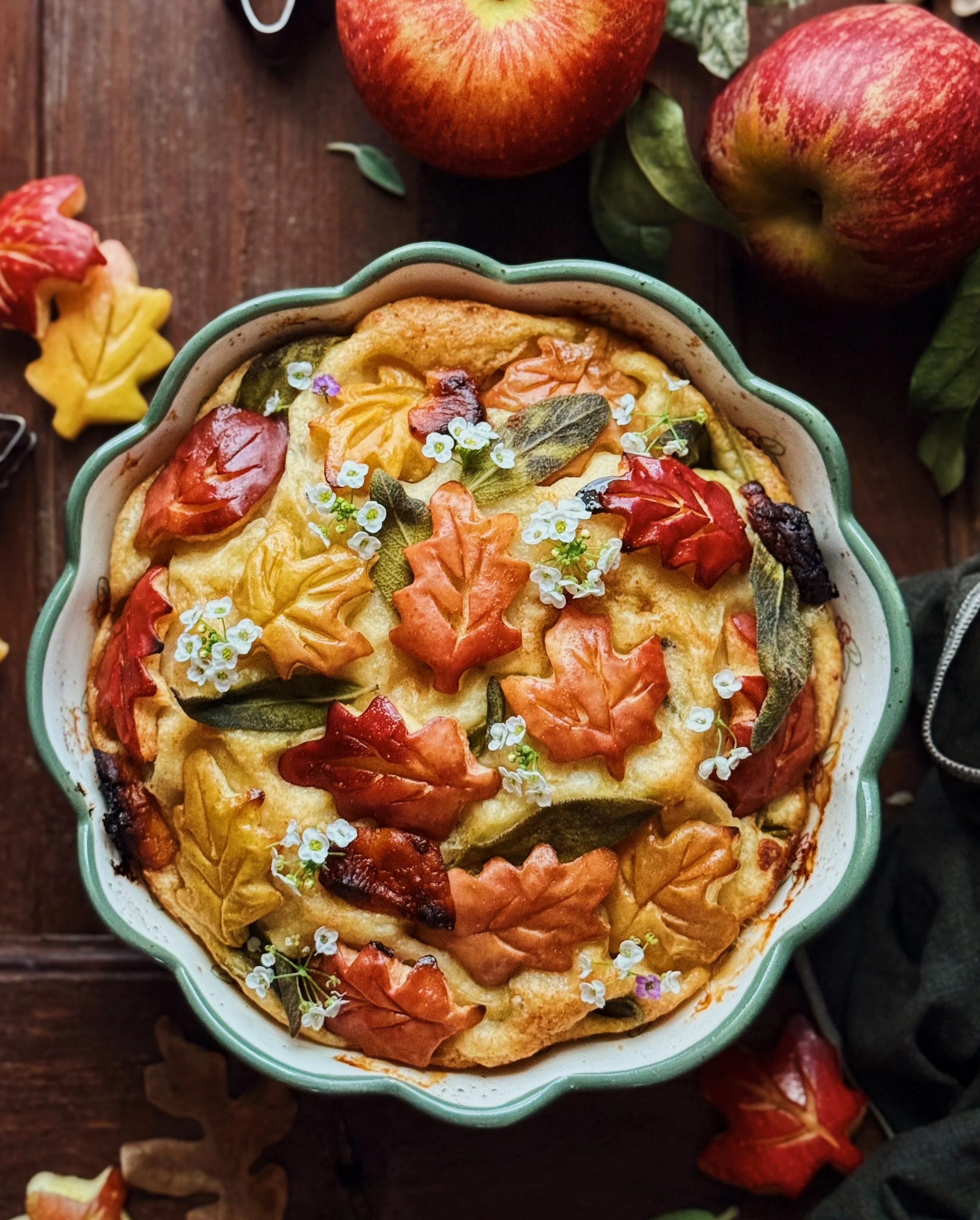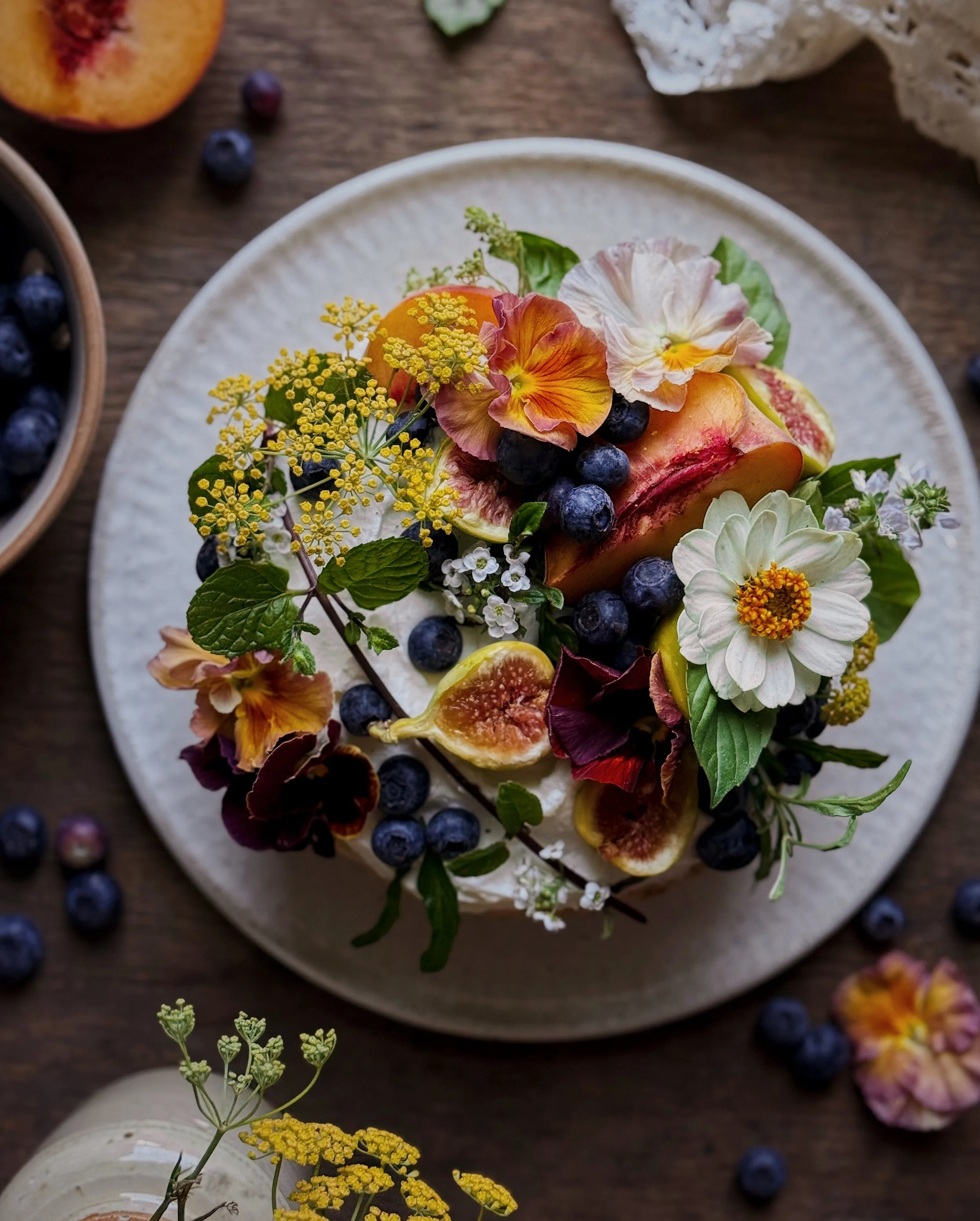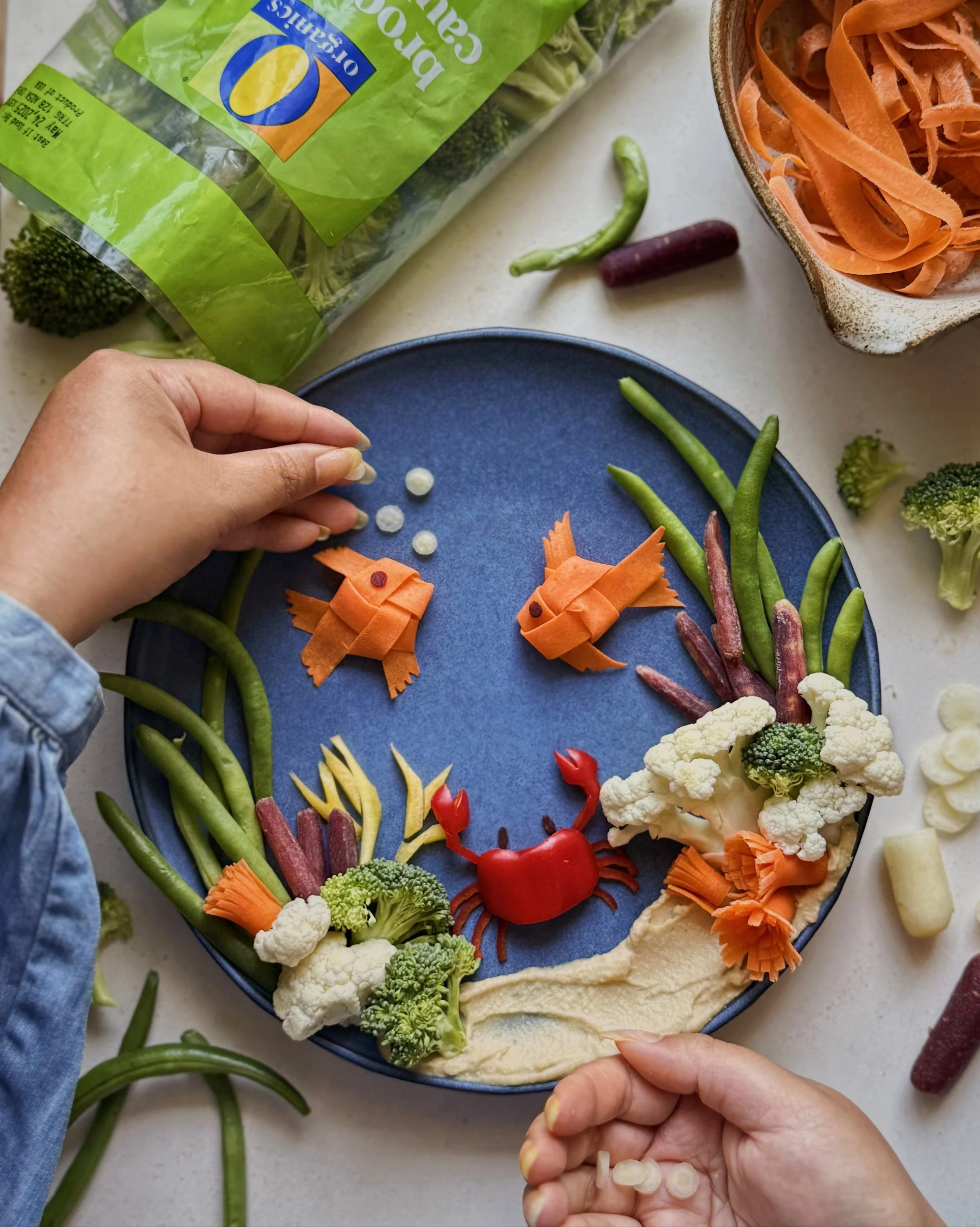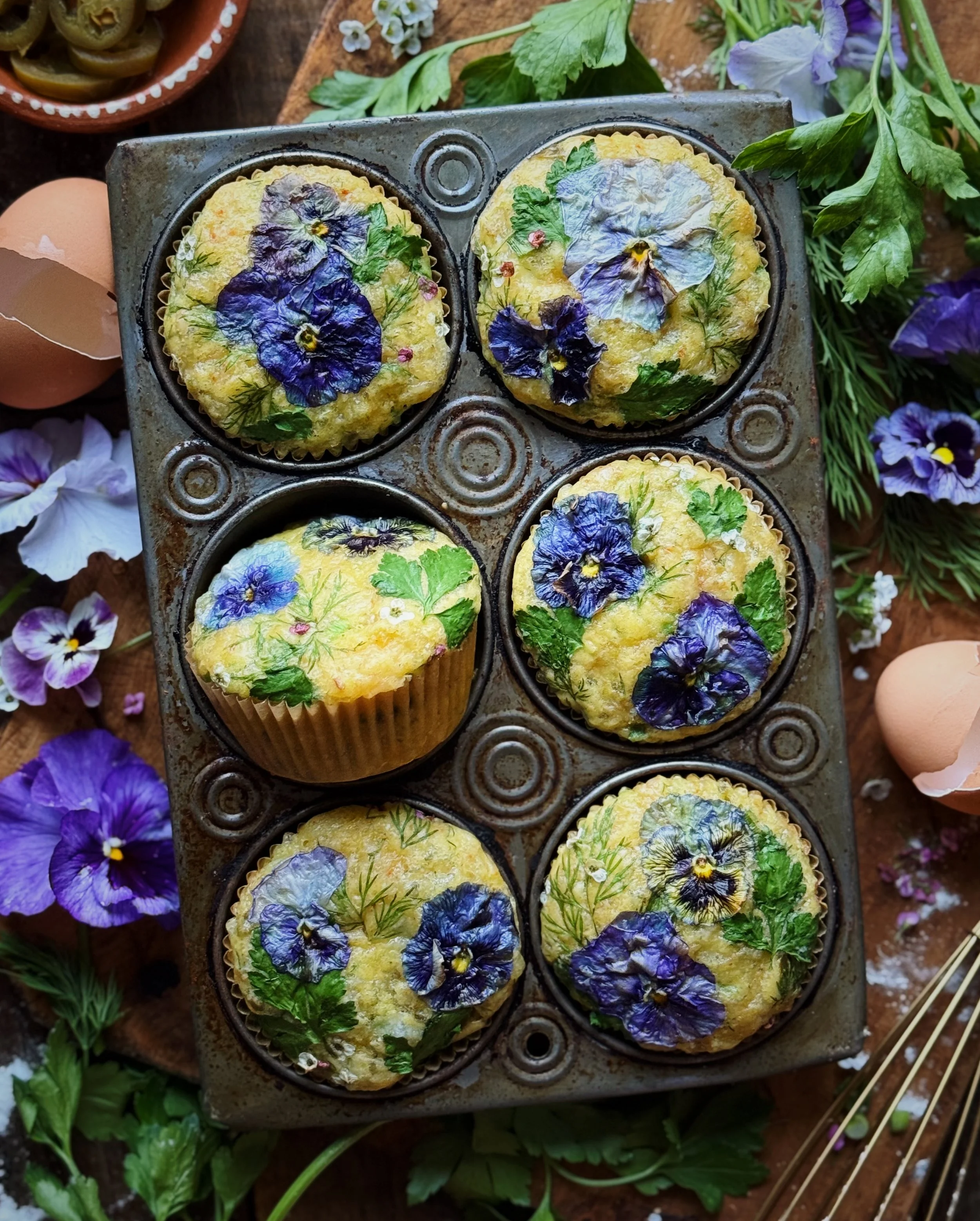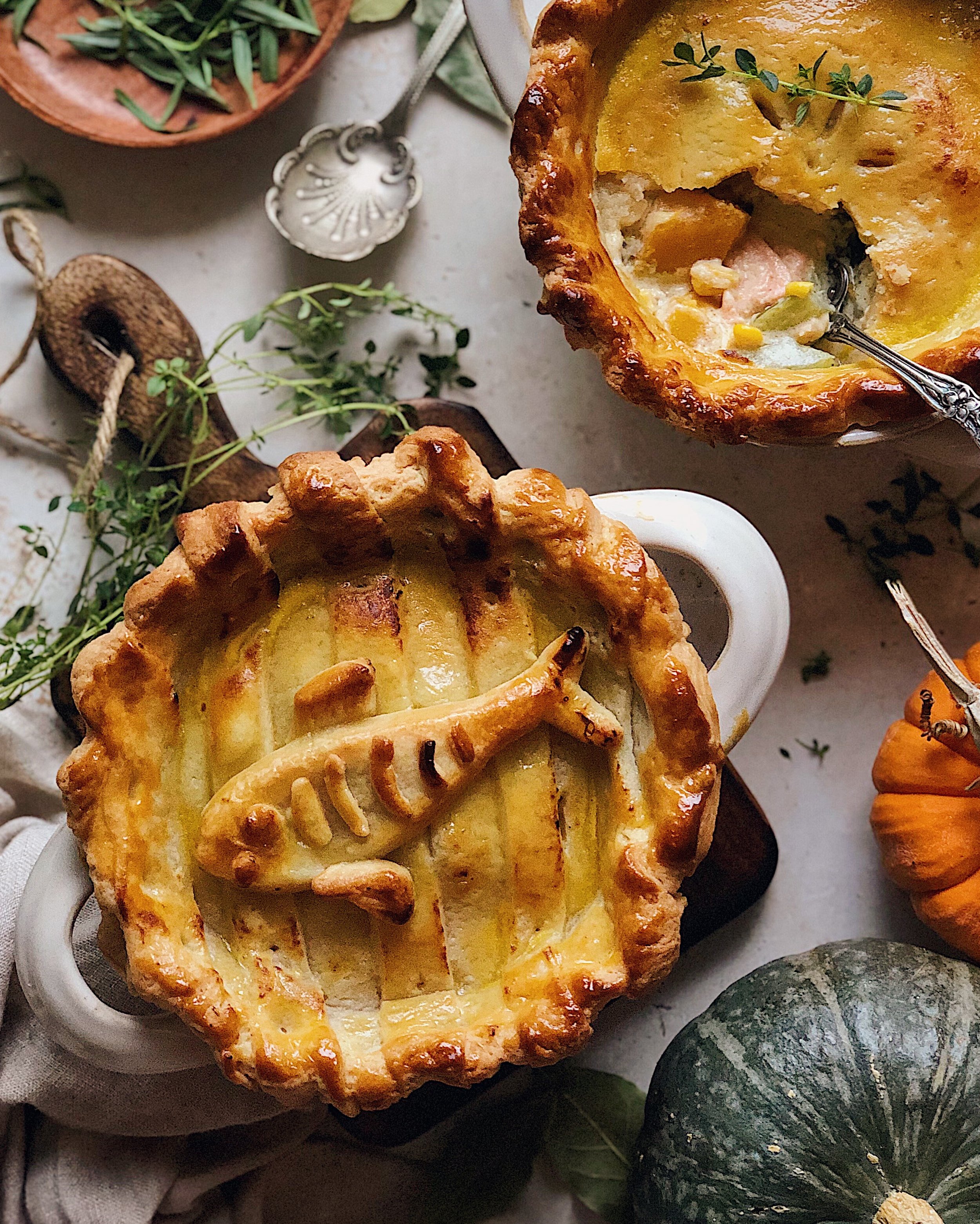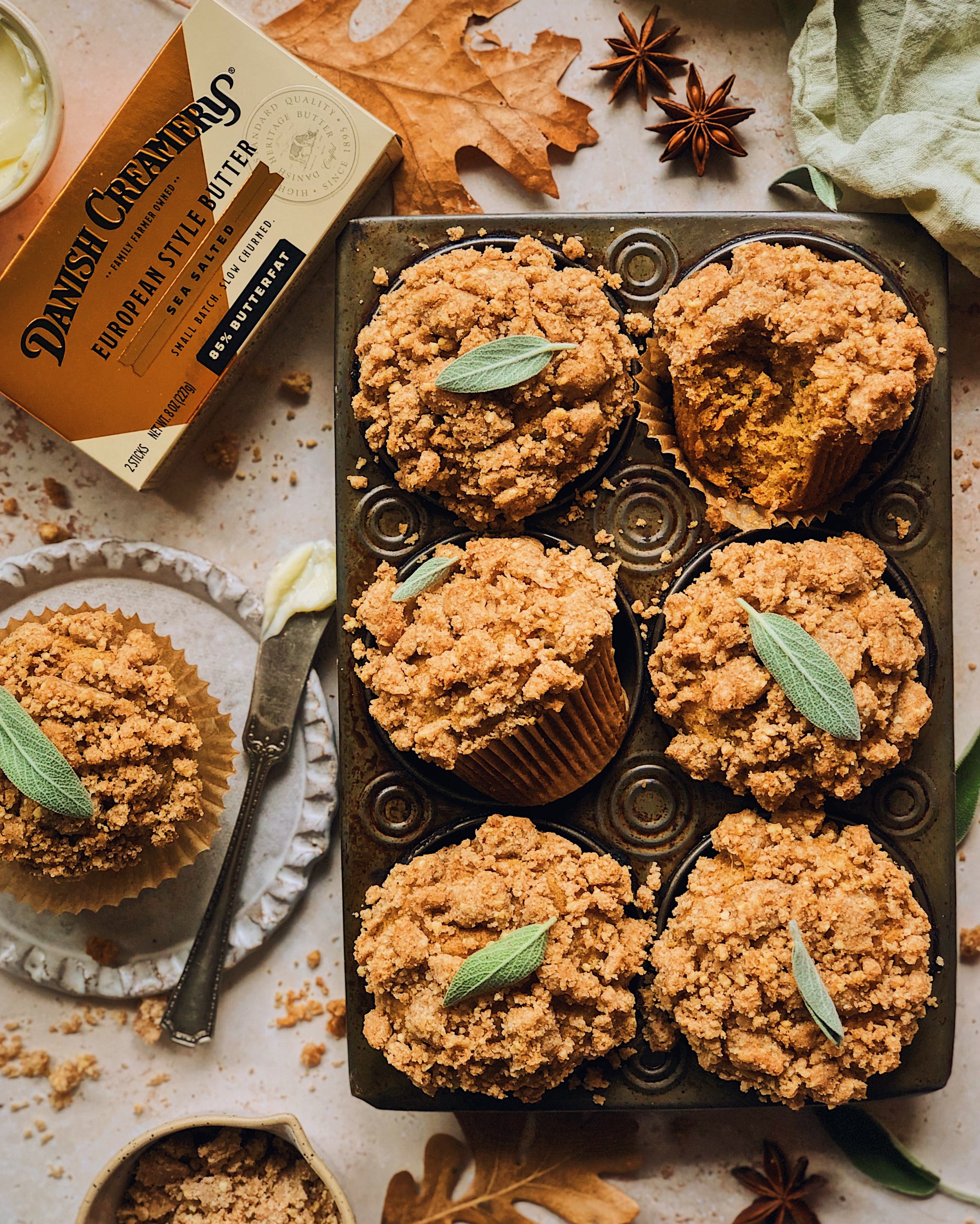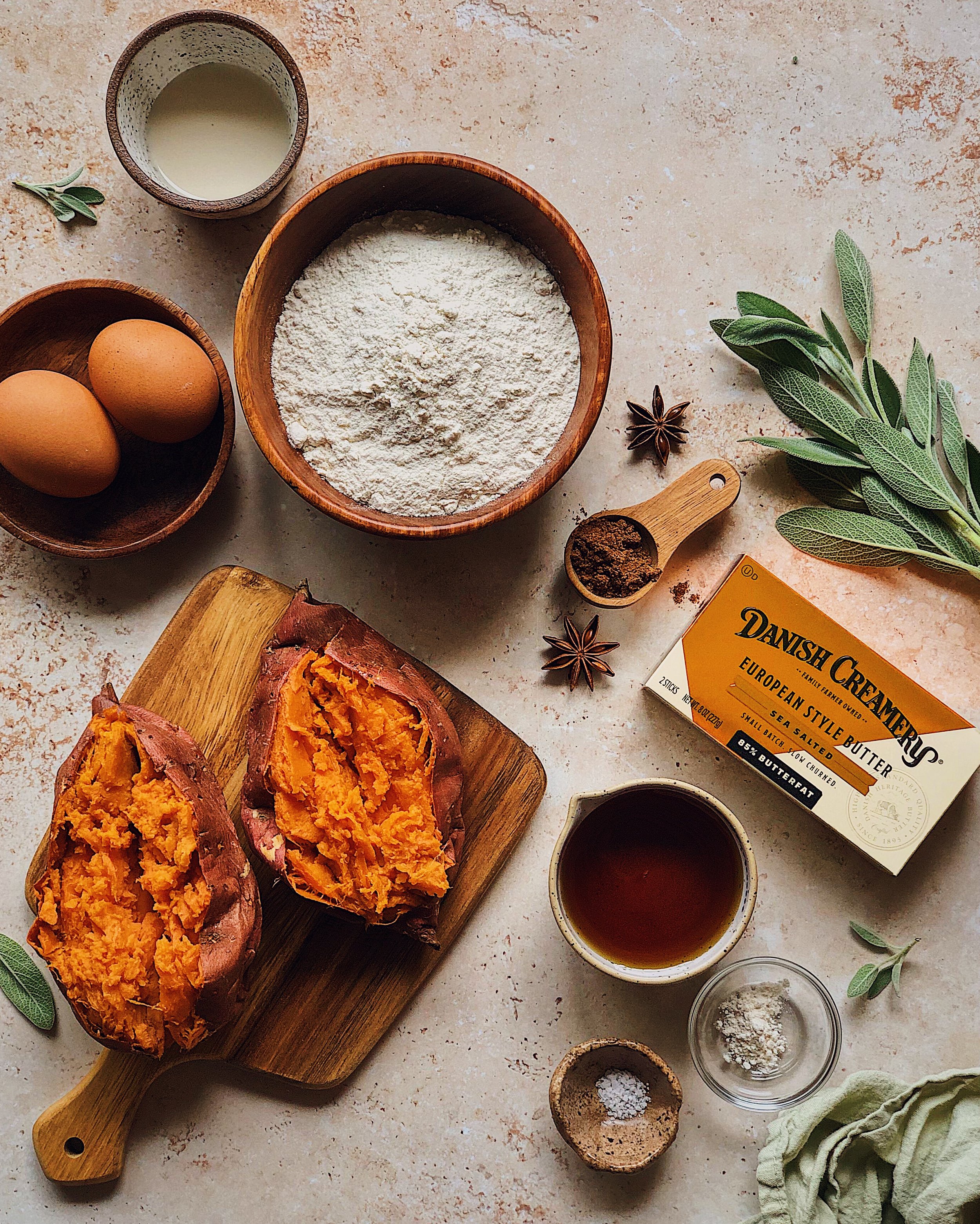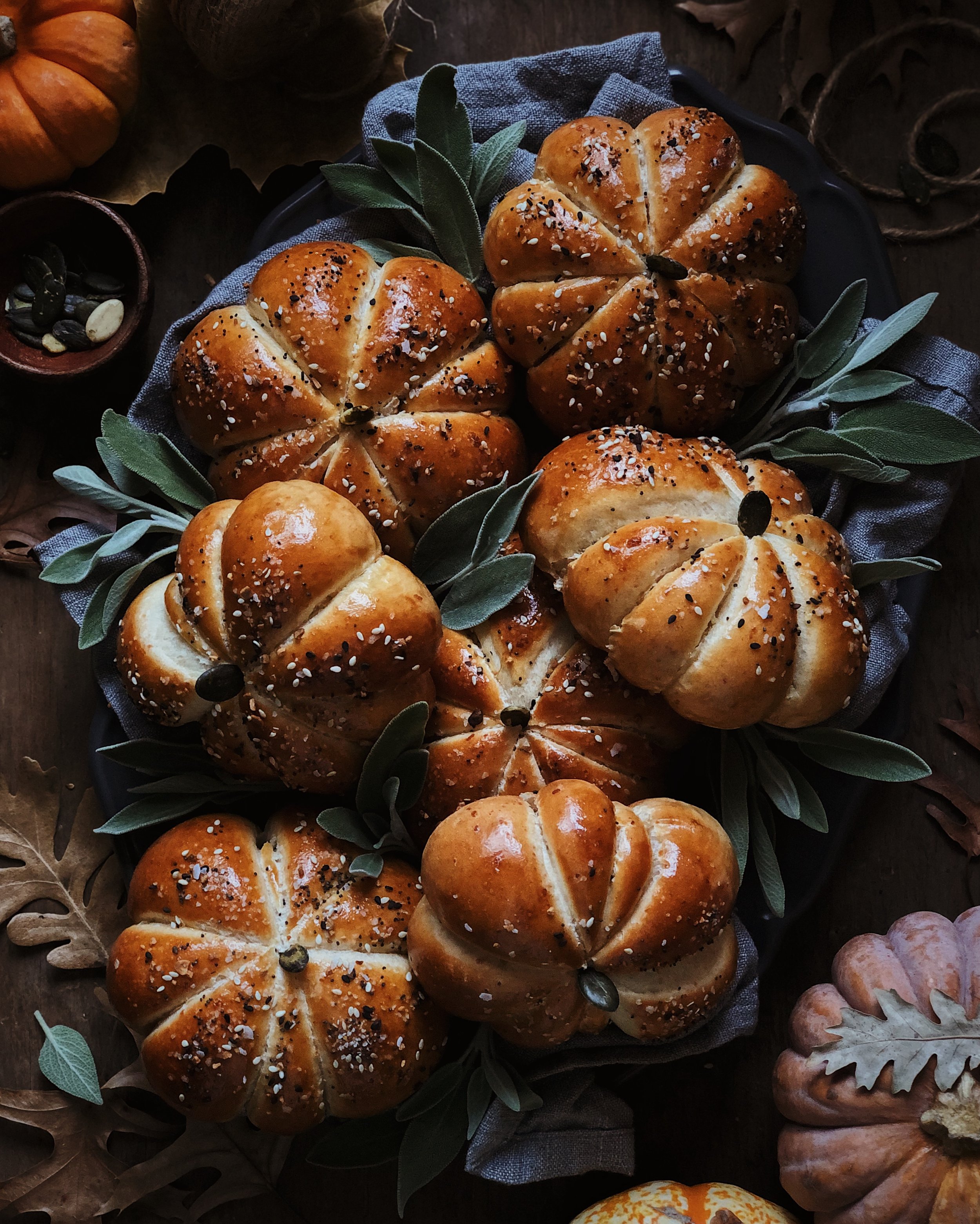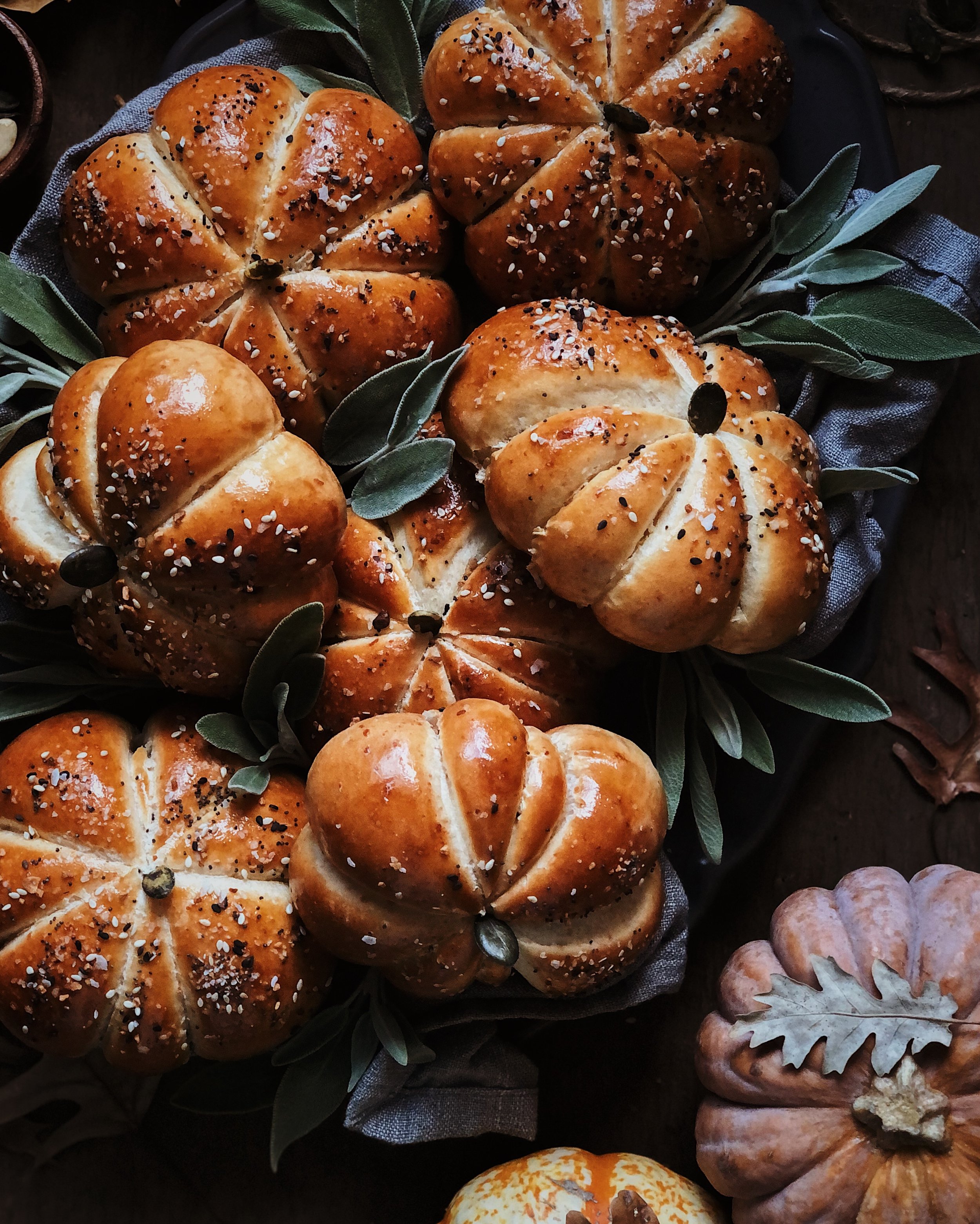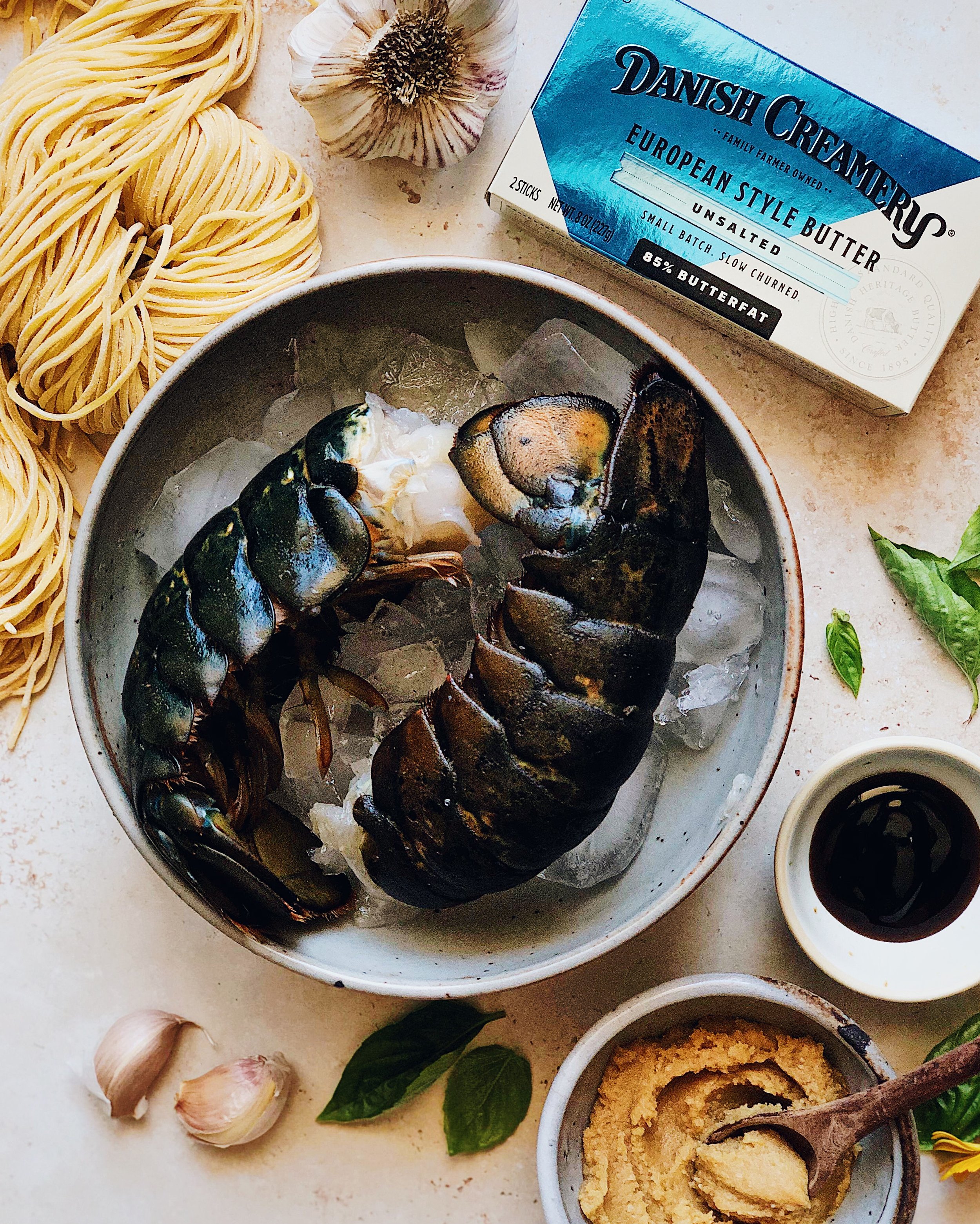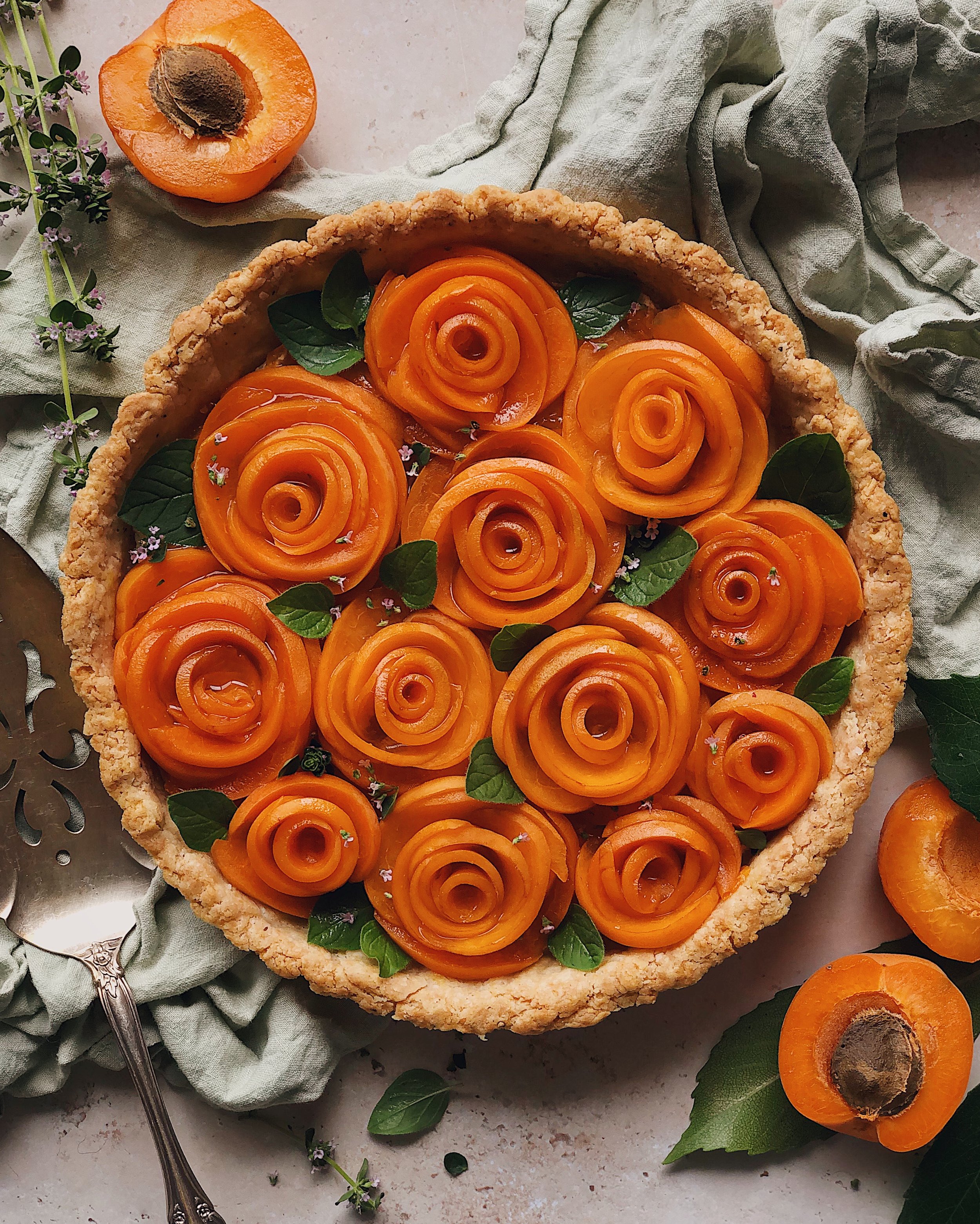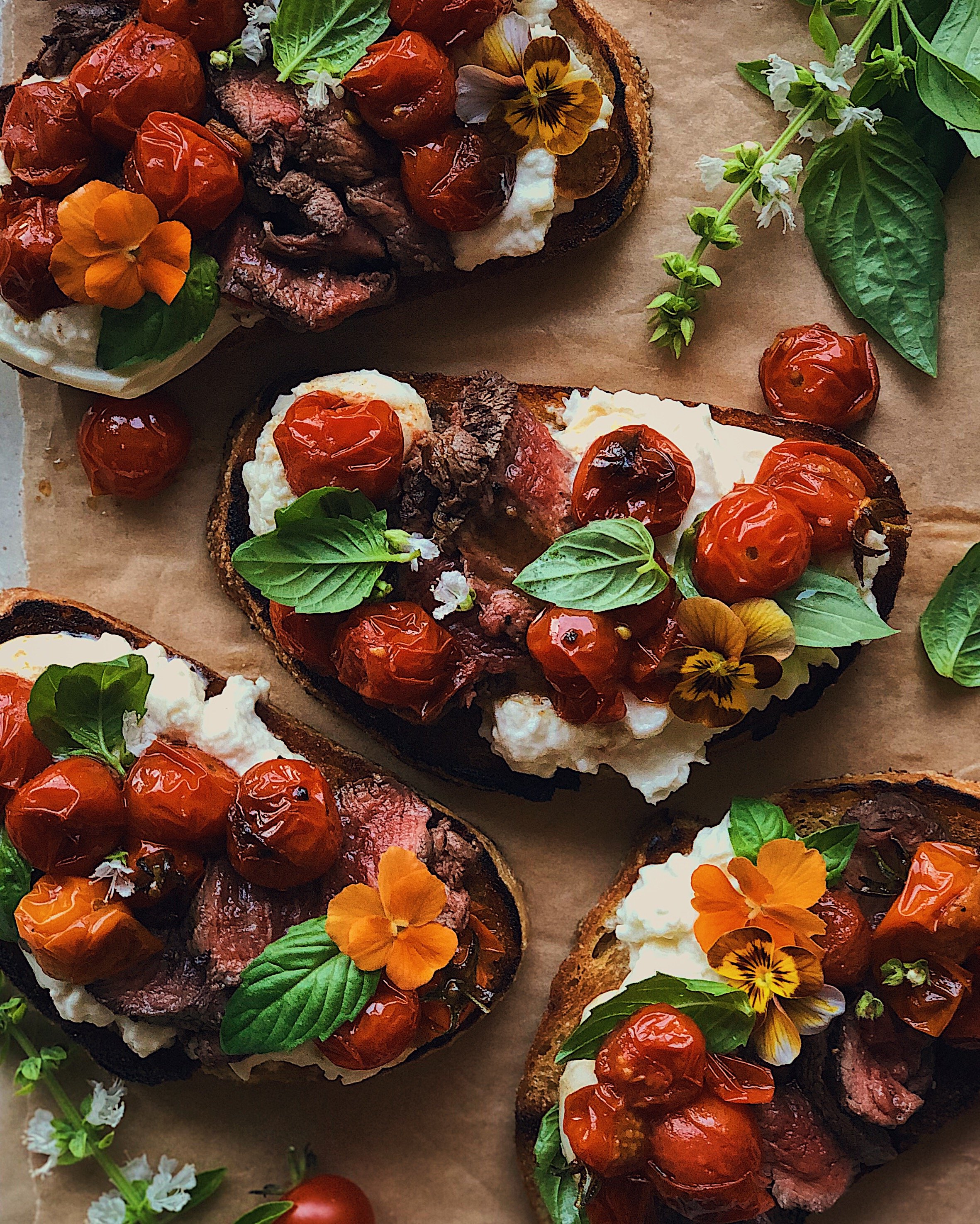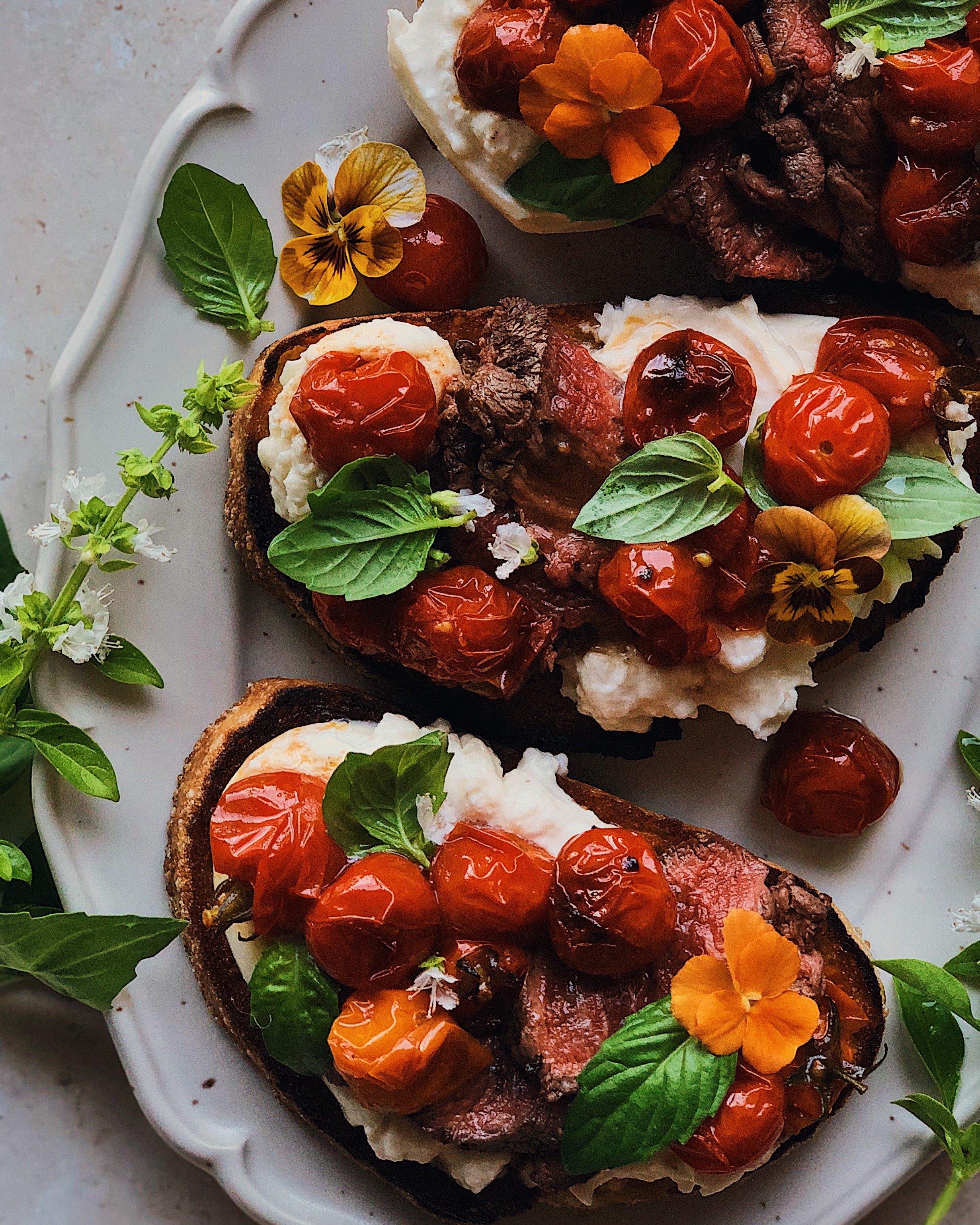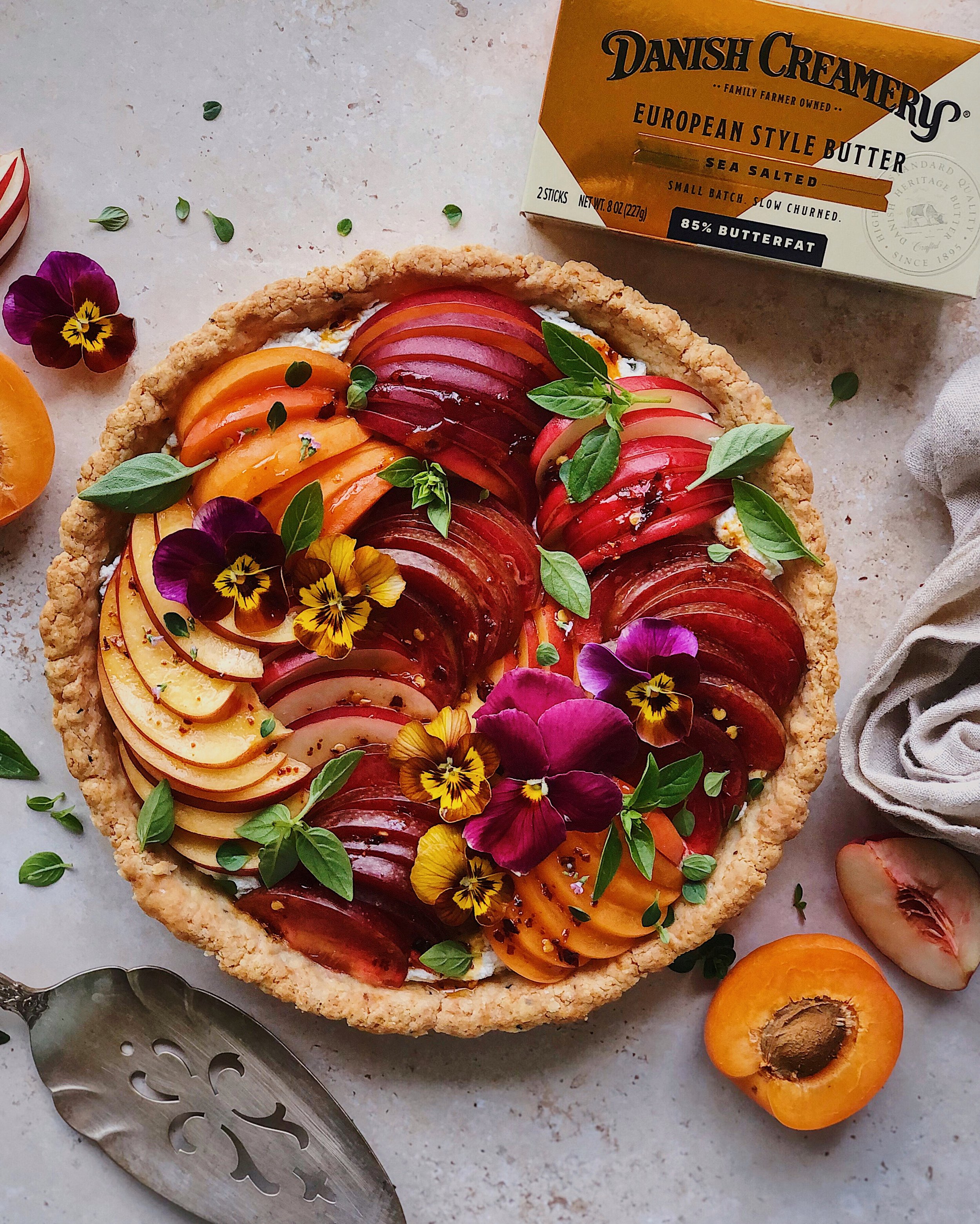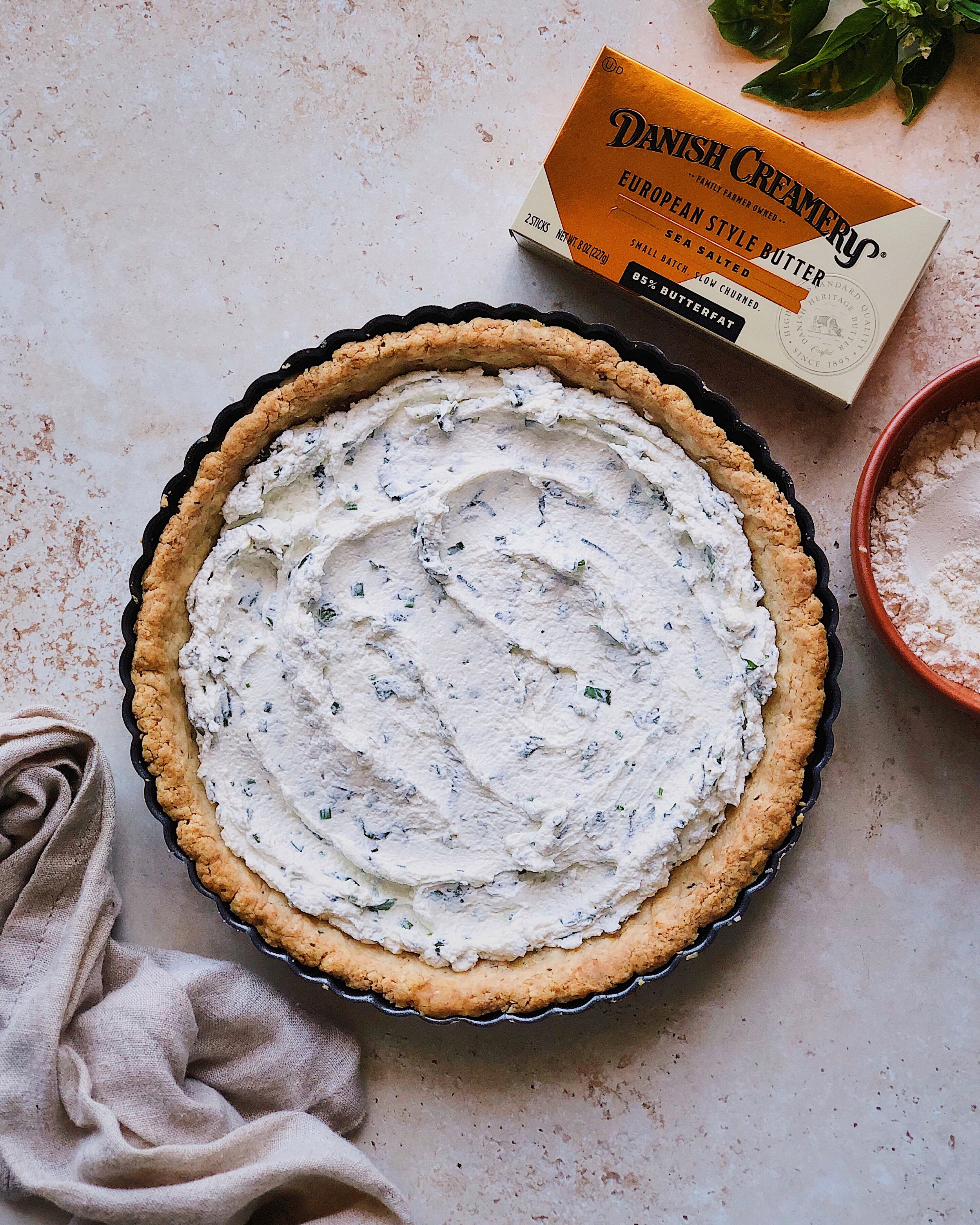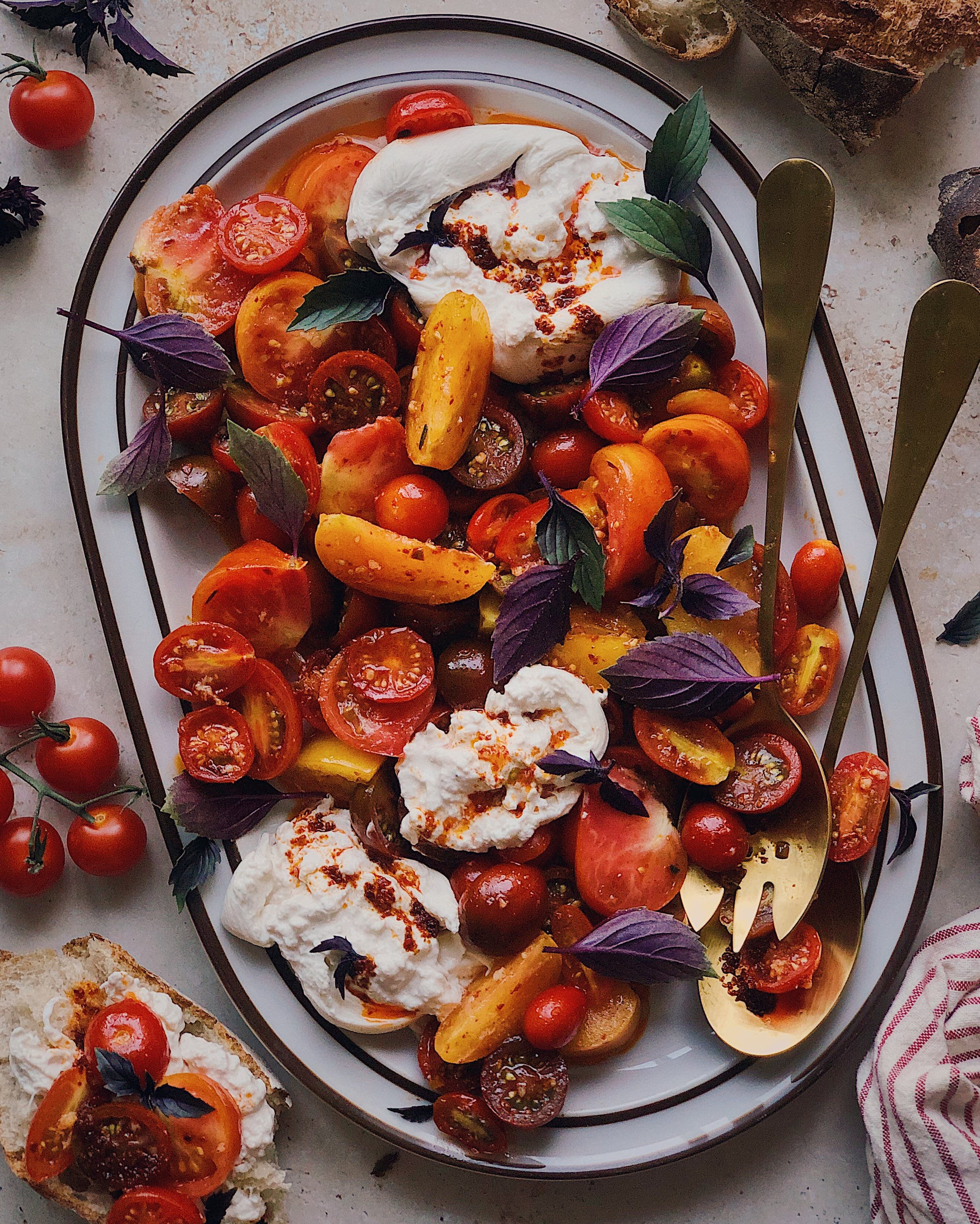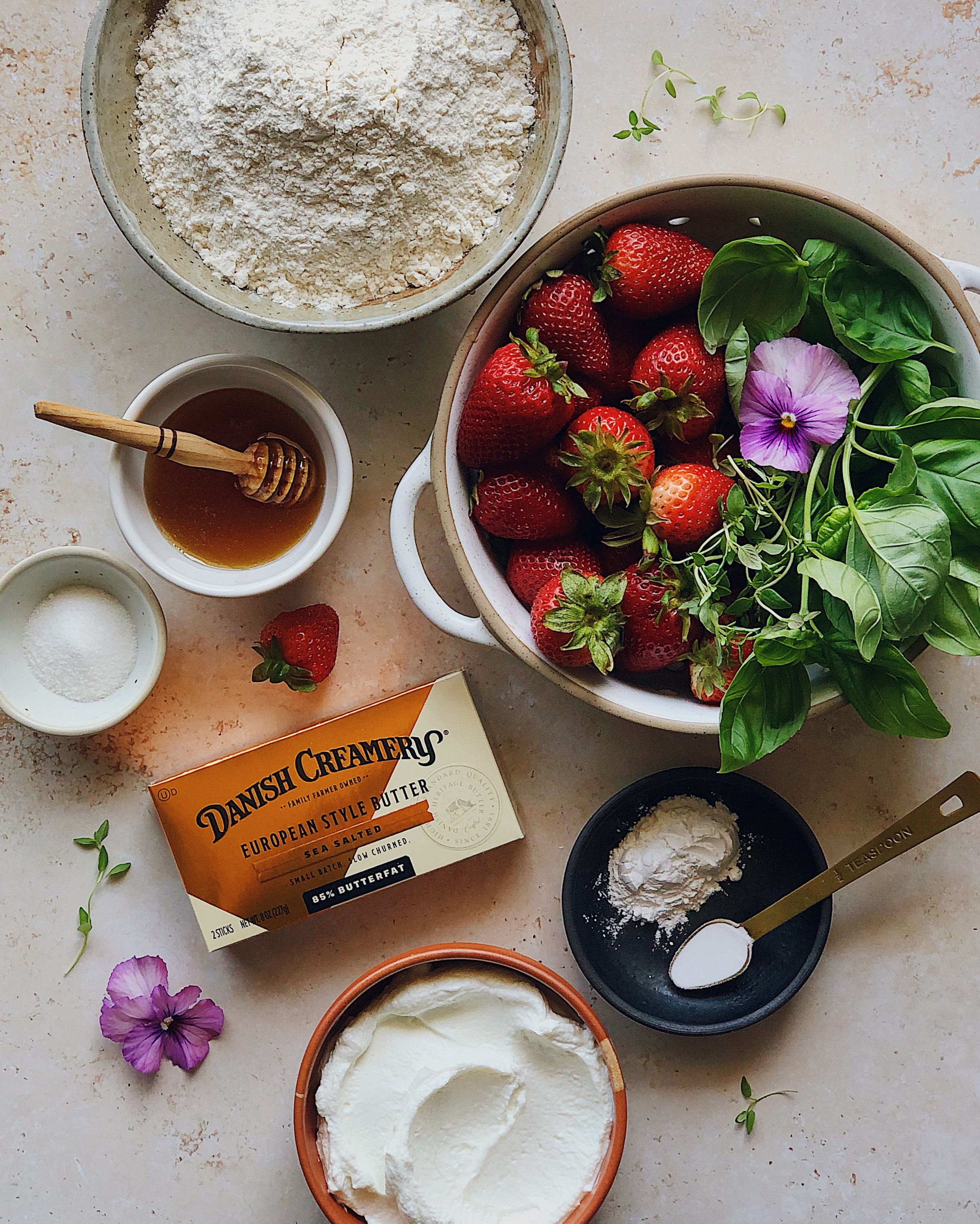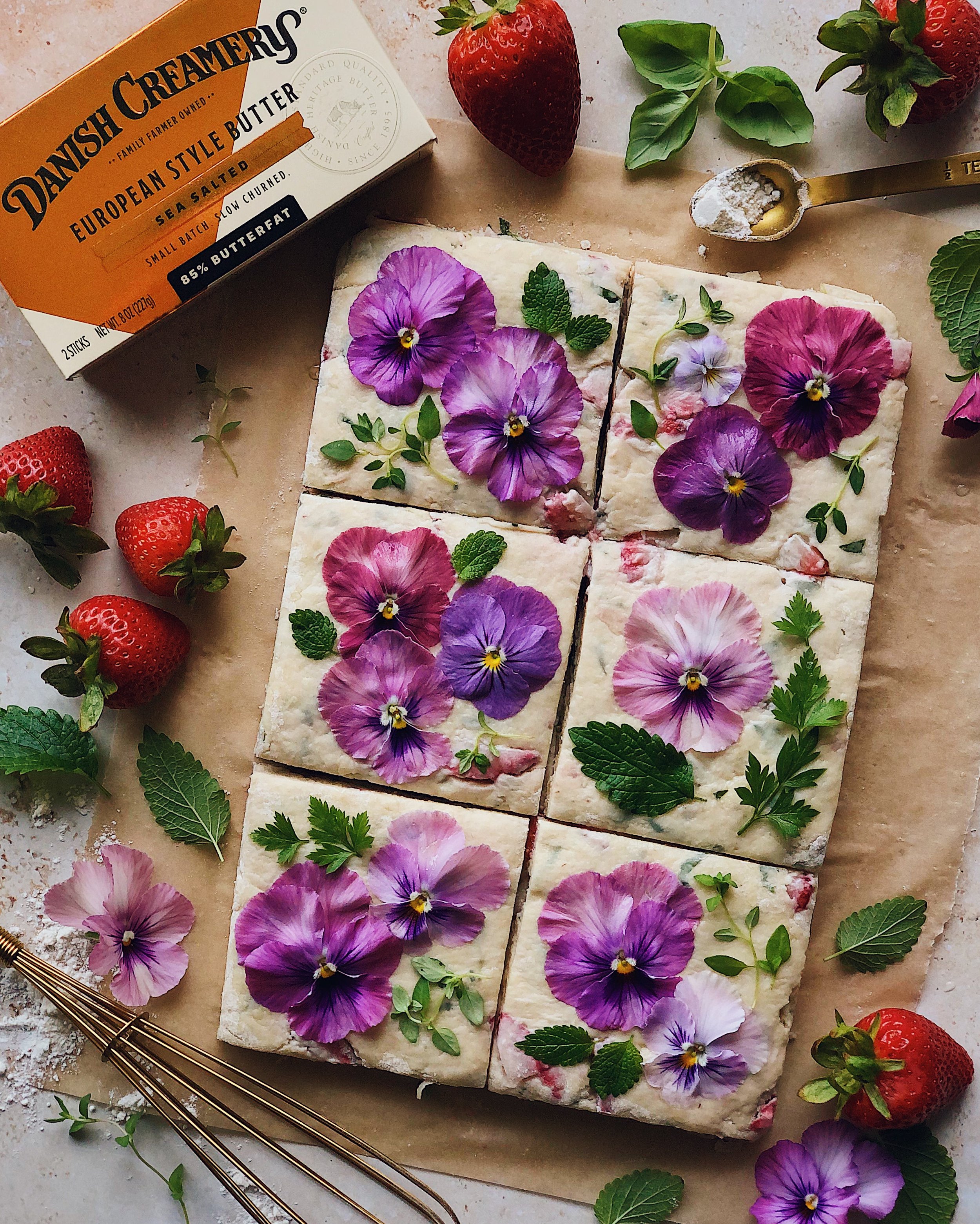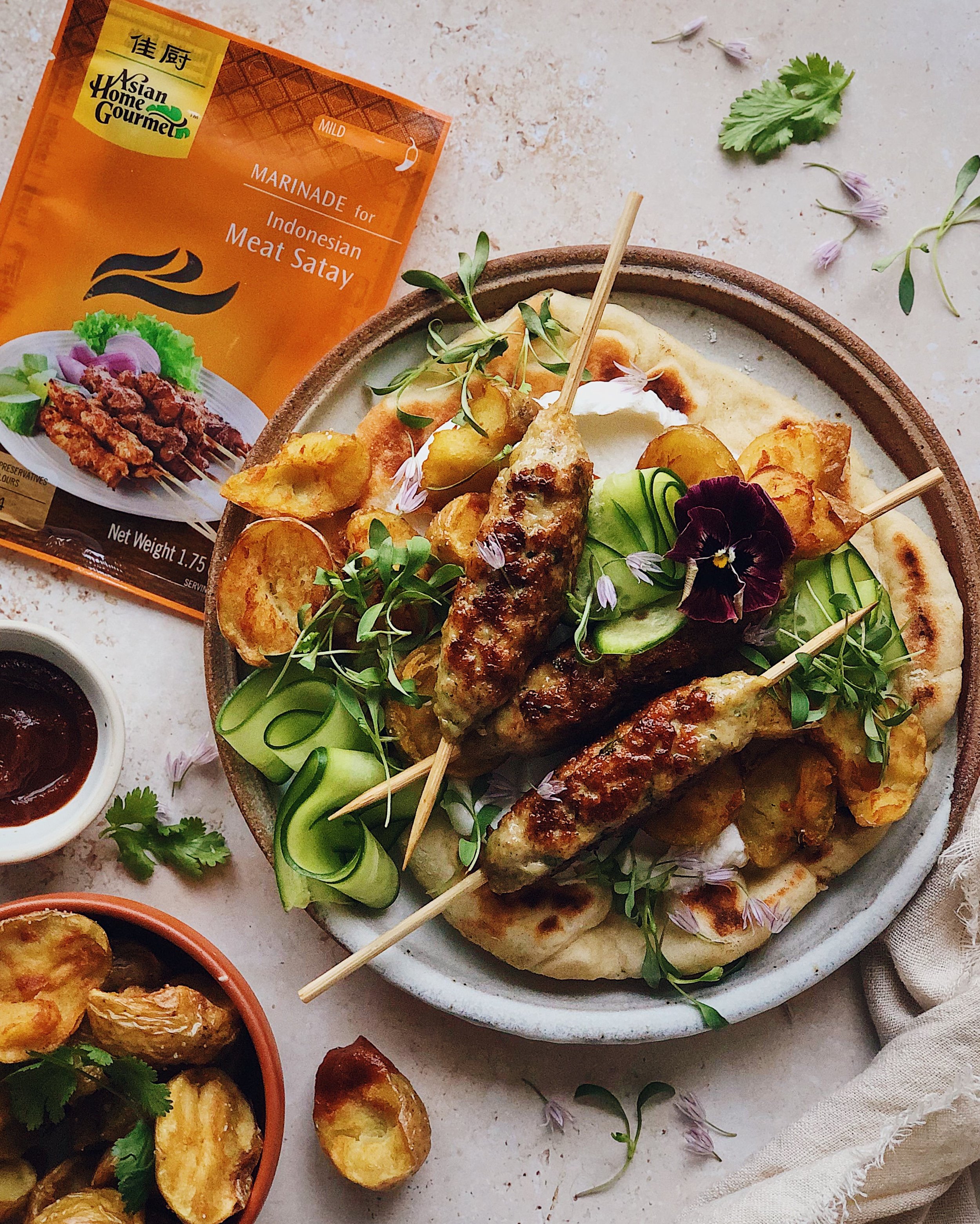Procedure
Combine flour, baking powder, baking soda, sugar, and salt in a large bowl and whisk together.
Grate in the frozen butter using the large holes of a box grater; toss together with the dry ingredients as you go, to avoid clumps. Then, toss all the butter and dry ingredients together gently so each shaving of butter is separated and coated with the dry ingredients. Drizzle 3 tablespoons of honey evenly over the mixture.
Add strawberry pieces and chopped herbs to the mixture and gently combine.
Create a well in the center of the mixture. Pour yogurt in the well, then slowly incorporate the flour mixture into the wet yogurt . Once all the yogurt is absorbed, resulting in a craggy texture, use hands to gather the dough together and fold it on itself a few times until it is a cohesive dough.
Dump dough onto a cold work surface and try to work quickly and keep everything cold during the folding process. Dust work surface with flour and do so generously throughout the process as needed to prevent sticking. Use hands to shape dough into a rectangle, then use a dusted rolling pin to roll into a rectangle roughly 8 inches wide by 12 inches tall. Fold down the top third and then fold up the bottom third (like you would fold a letter). Flip and rotate 90 degrees and repeat the shaping, rolling, and folding sequence. Flip and rotate again, then do the sequence one more time, so you have done 3 sets of letter folds total.
Roll out the dough one more time, to a rectangle slightly larger than 8 inches x 12 inches. Using a sharp knife dusted in flour, cut the rectangle into 6 even sections by pushing the knife straight down firmly to avoid any sort of sawing motion (that could seal the layers and prevent the biscuits from puffing up). If desired, trim off a tiny amount of dough from all the outer edges of the rectangle to create sharper edges and discard the excess dough—this will also result in a more puffed-up biscuit.
Place biscuits on a parchment-lined baking tray. Freeze for 10 minutes.
While biscuits are in the freezer, preheat oven to 425°F.
Combine remaining 1 tablespoon of honey with 1 tablespoon of water and whisk together until homogeneous. Brush evenly over the tops of biscuits.
If desired, gently press edible flowers and herb leaves on top of the biscuits for decoration. If biscuits do not feel chilled when done decorating, return them to the freezer for another 5–10 minutes before baking.
Bake for 17–20 minutes, or until the biscuits are golden. Enjoy by splitting open with your hands and spreading halves with softened Danish Creamery European Style Sea Salted Butter.
